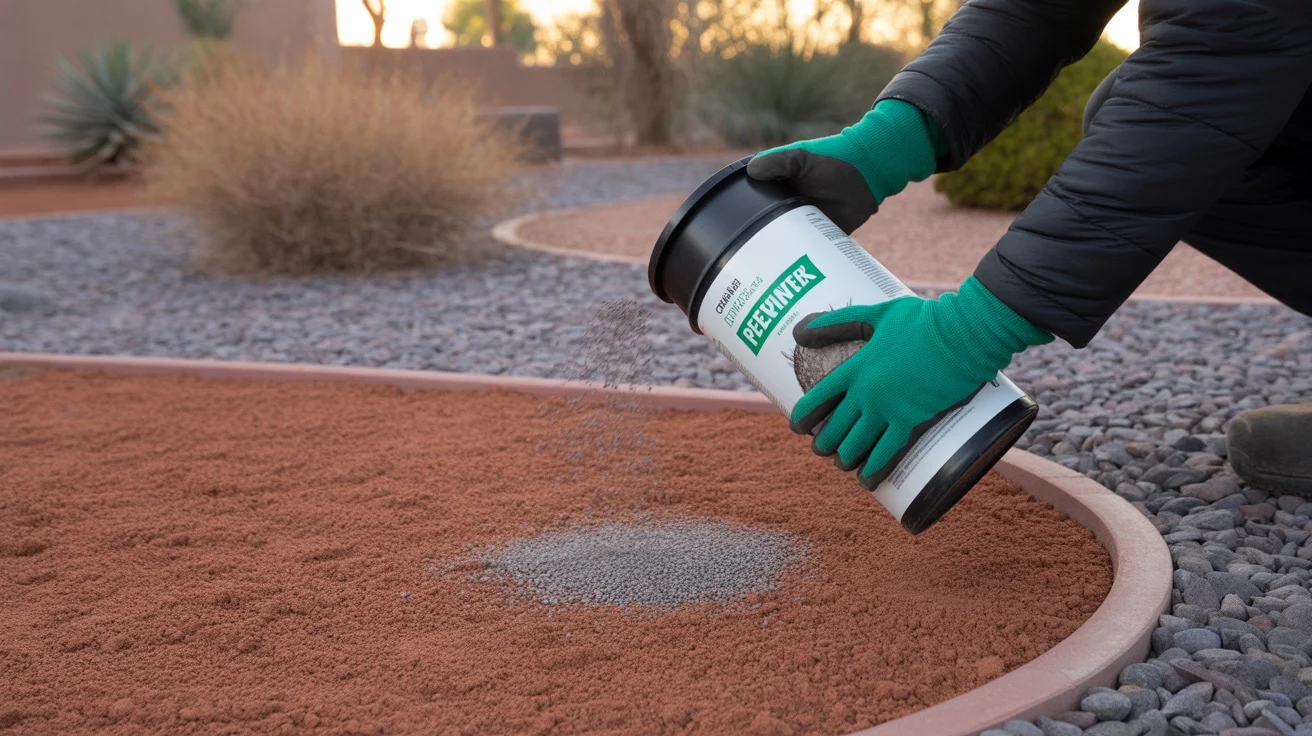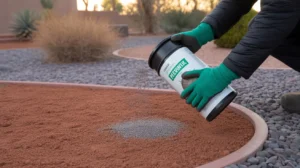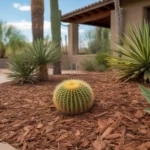Spring in Gilbert means two things: the annual rodeo and an explosion of weeds in your yard. While the rodeo is a welcome tradition, those pesky spring weeds are anything but. The key to winning the battle against weeds is a well-timed pre-emergent weed barrier application. But when exactly should you apply it for maximum effectiveness in Gilbert’s unique climate? Read on to find out.

The Importance of Pre-Emergent Timing
Pre-emergent herbicides work by creating a chemical barrier in the top layer of soil that prevents weed seeds from germinating and growing. But for the barrier to be effective, it needs to be applied before the weed seeds start to sprout. In Gilbert, this window typically falls in late January to early February, about 4-6 weeks before the average last frost date.
However, timing can vary year to year depending on weather patterns. A warmer winter may cause weeds to germinate earlier, while a late cold snap can delay emergence. As a general rule, aim to apply your pre-emergent when soil temperatures have been above 50°F for several consecutive days. This is when many common weed seeds in Gilbert, like crabgrass and spurge, begin to wake up from their winter slumber.

Choosing the Right Pre-Emergent Product
Not all pre-emergent herbicides are created equal. For the best results in Gilbert, look for a product that contains the active ingredients prodiamine or dithiopyr. These provide long-lasting control of grassy weeds like crabgrass and goosegrass. For broadleaf weeds like spurge and purslane, products with isoxaben or trifluralin work well.
Be sure to choose a granular formula rather than a liquid concentrate for easier, more even application. Water the granules in thoroughly immediately after spreading to activate the herbicide barrier. Avoid using pre-emergents in areas where you plan to seed desirable plants, as it will prevent those seeds from sprouting as well.
“In Gilbert, I always recommend putting down pre-emergent weed control by early February at the latest. Our warm spring sneaks up fast, and you want that barrier in place before the weeds even think about germinating. Consistency is key—make it an annual habit and you’ll be able to enjoy your yard weed-free all the way through the rodeo!”
– Judy Mendoza, Arizona Certified Nursery Professional
Pairing With Other Weed Control Methods
While a well-timed pre-emergent application will stop the majority of weeds before they even sprout, some stubborn invaders may still pop up. Stay vigilant and remove any breakthrough weeds quickly before they can flower and spread seeds. Spot-spraying with a post-emergent herbicide or carefully hand-pulling can take care of sparse pop-up weeds.
In addition, good cultural practices like proper spring planting, tuning up your equipment, and calibrating your irrigation system will go a long way in preventing weed issues. Thick, healthy turfgrass and a 3-inch layer of organic mulch in beds will block sunlight from reaching weed seeds, stopping germination in its tracks. With a little planning and effort now, you can relax and enjoy a rodeo-ready, weed-free yard all spring and summer long.








